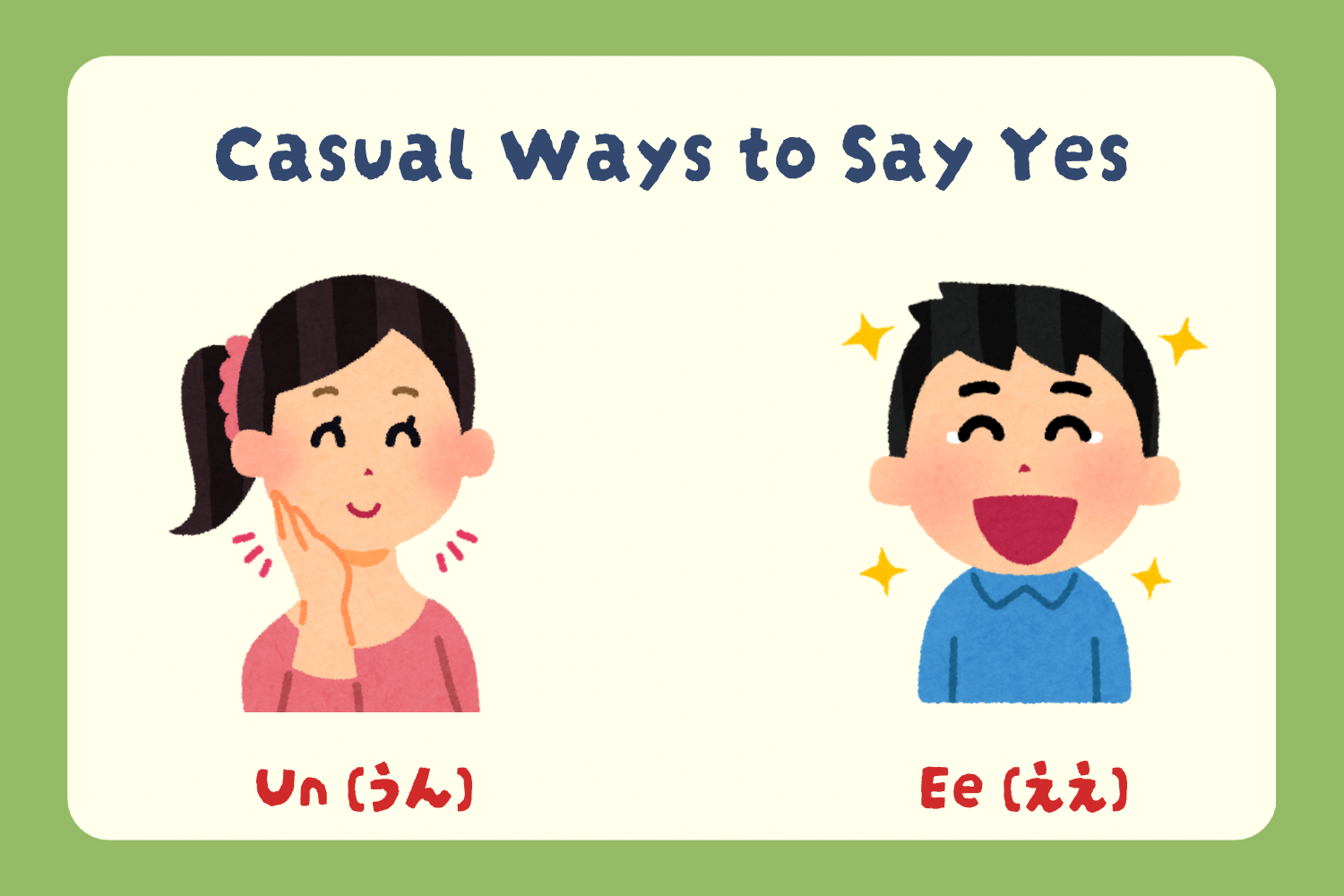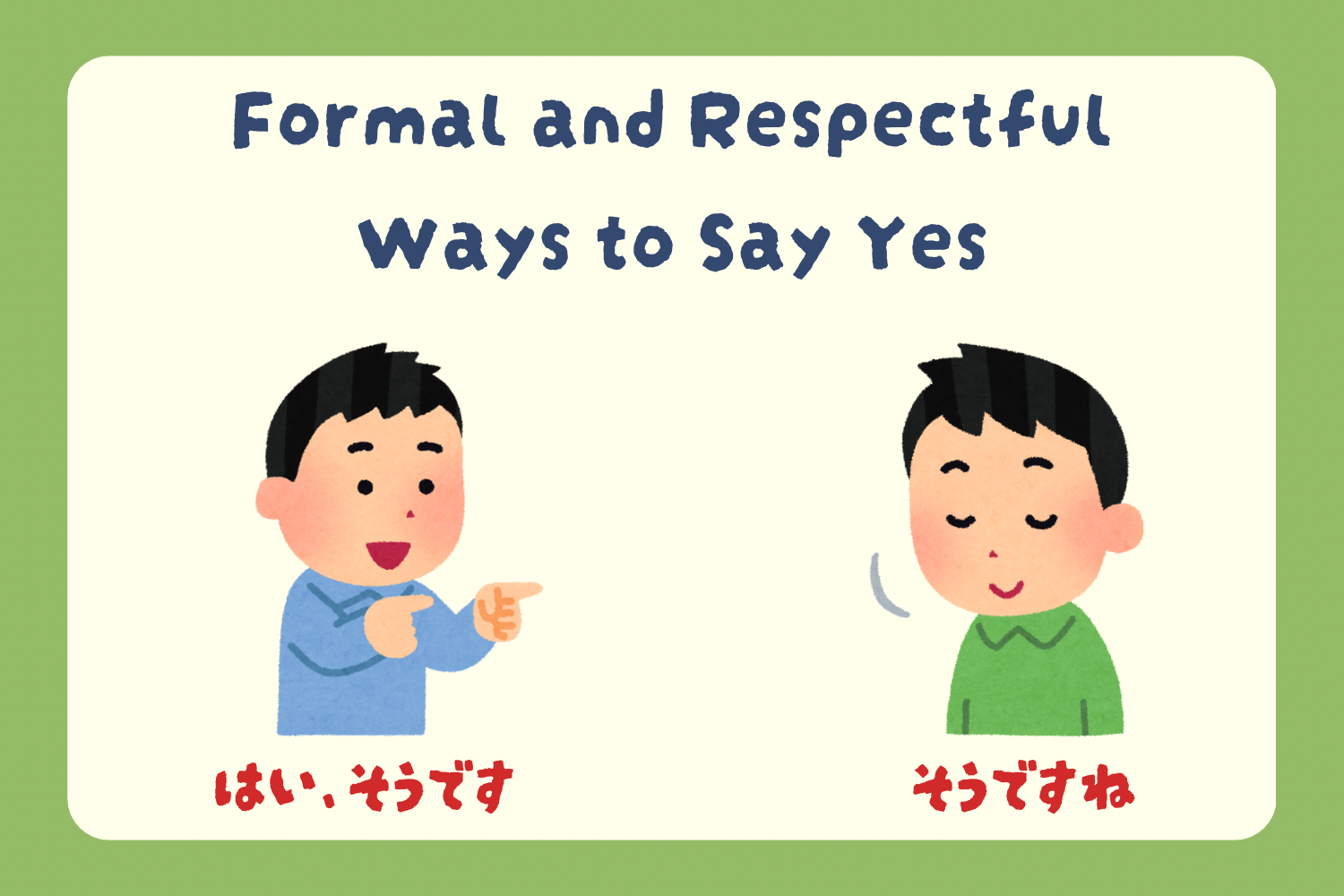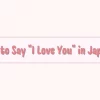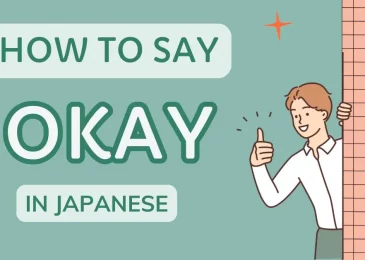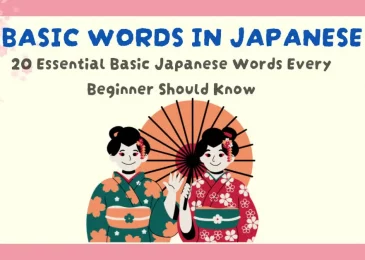In Japanese, saying “yes” is not as simple as in English. The word you choose to agree with can change significantly based on the situation, relationship, and level of formality. Understanding these variations not only helps you sound more natural in Japanese but also shows respect for Japanese social norms and cultural expectations. This guide explores the many ways to say “yes” in Japanese and provides context for when and how to use each one.
Basic Ways to Say Yes in Japanese
The most common and straightforward way to say “yes” in Japanese is “Hai” (はい). This word is incredibly versatile and can be used in many situations, from answering questions to confirming statements. “Hai” is a safe and commonly understood choice, whether in a casual setting or a more formal environment. However, it doesn’t always capture all the nuances of agreement, especially in more complex social contexts.
Example:
Q: 会議に来ますか? (Kaigi ni kimasu ka?)
A: はい (Hai)
(Q: “Are you coming to the meeting?”
A: “Yes.”)
In this example, “hai” simply acknowledges that the person will attend the meeting, without adding further nuance or explanation. It’s a basic but effective response.
Casual Ways to Say Yes
In informal or friendly settings, Japanese speakers often opt for less formal expressions of “yes.” These casual forms create a relaxed atmosphere and are suitable when speaking with close friends or family members.
• Un (うん): This is an informal “yes,” equivalent to “yeah” in English. It’s often used among friends, family, or in casual situations where strict politeness is not required.
• Ee (ええ): Slightly more polite than “un,” yet still informal, “ee” can be used in casual conversations when you want to show a bit of politeness without being too formal.
Example:
Q: 一緒に昼ごはんを食べる? (Issho ni hirugohan wo taberu?)
A: うん (Un)
( Q: “Want to grab lunch together?”
A: “Yeah.” )
These casual expressions should be avoided in formal or professional contexts as they might be perceived as disrespectful or overly familiar.
Formal and Respectful Ways to Say Yes
In formal or respectful situations, how you agree in Japanese should reflect your consideration for the other person’s position or age. Here are a few polite phrases that are suitable for such contexts:
• Hai, sou desu (はい、そうです): This phrase translates to “Yes, that’s right” and shows agreement in a polite and respectful manner. It’s often used in formal settings to confirm information respectfully.
• Sou desu ne (そうですね) / Sono toori desu (そのとおりです): This phrase is a thoughtful way to agree, implying that you have considered what the other person has said. It’s often used to show understanding and thoughtful agreement.
Example:
Q: 今日は暑いですね? (Kyou wa atsui desu ne?)
A: そうですね (Sou desu ne)
( Q: “The weather is quite hot today, isn’t it?”
A: “Yes, it is.” )
Using these polite expressions helps you fit naturally into formal environments, such as workplaces or when speaking with elders. This respect for context is crucial in Japanese culture.
Polite Agreement Phrases for Specific Situations
In Japanese, there are specific phrases used to express “yes” in contexts that require a more thoughtful or cooperative intent. Here are a few phrases that show not only agreement but also a willingness to engage cooperatively or respectfully:
• Hai, yoroshiku onegaishimasu (はい、よろしくお願いします): This phrase roughly means, “Yes, I look forward to working with you.” It’s often used to express agreement when cooperating on a task or project, adding a sense of politeness and readiness to contribute.
• Hai, wakarimashita (はい、わかりました): Meaning “Yes, I understand,” this phrase is commonly used to confirm understanding in formal or professional contexts. It’s often used when receiving instructions or acknowledging a task from a superior.
Example:
Manager: 明日までに書類を準備してください (Ashita made ni shorui wo junbi shite kudasai)
Employee: はい、わかりました (Hai, wakarimashita)
( Manager: “Please prepare the documents by tomorrow.”
Employee: “Yes, I understand.” )
These phrases convey respect and a commitment to fulfilling a request, making them essential in professional and formal interactions.
Non-Verbal Ways to Say Yes in Japanese Culture
In Japanese culture, non-verbal communication plays a significant role, especially in expressing agreement or attentiveness. Here are a few non-verbal cues that are commonly used to convey “yes” or show attentiveness without necessarily saying it out loud:
• Nodding: Nodding is a universal gesture, and in Japan, it signifies active listening and agreement. Slight nods are often used to show that you’re following along in a conversation, especially in group settings or during presentations.
• Bowing: In more formal settings, a slight bow can accompany a verbal agreement to show respect. Bowing in Japan signifies respect and acknowledgment, which can enhance your verbal “yes” in respectful situations.
• Gentle Eye Contact: While direct eye contact is less common in Japan than in some Western cultures, maintaining a gentle gaze shows engagement and attentiveness without being too assertive.
Tips on Understanding Context for “Yes” Responses
Choosing the right form of “yes” in Japanese often depends on understanding the context. Here’s a quick guide on which type of “yes” to use based on the situation:
• Casual Setting: Use “Un” or “Ee” when speaking with friends, family, or peers in an informal environment.
• Polite Setting: Use “Hai, sou desu” or “Sou desu ne” with acquaintances or in semi-formal settings to show respect.
• Formal or Professional Setting: Use “Hai, wakarimashita” or “Hai, yoroshiku onegaishimasu” when speaking with superiors or in formal work settings to convey professionalism and respect.
Being aware of the context helps you show appropriate respect and understanding, which are highly valued in Japanese culture.
Common Mistakes to Avoid When Saying Yes in Japanese
When agreeing in Japanese, there are several common mistakes non-native speakers might make. Here’s what to avoid:
• Using Casual Language in Formal Settings: Avoid using “Un” or “Ee” in professional or formal situations, as these can come across as overly casual and disrespectful.
• Overusing “Hai” Without Considering Context: Simply saying “Hai” might not always be sufficient. In situations that require confirmation or specific acknowledgment, such as in professional settings, a more specific phrase like “Hai, wakarimashita” may be necessary.
• Misinterpreting “Sumimasen” as Agreement: “Sumimasen” can sometimes imply acknowledgment, but it’s primarily used as an apology or to say “excuse me.” It’s not a substitute for “yes” and shouldn’t be used as such in agreement situations.
Avoiding these mistakes will help you fit more naturally into Japanese conversations and maintain the appropriate level of respect and politeness.
Practice and Examples for Saying Yes in Japanese
Practicing different ways to say “yes” can help you become more comfortable and natural in Japanese. Here are sample dialogues for various contexts:
Example 1: Casual Setting
Friend: 明日暇? (Ashita hima?)
You: うん、大丈夫だよ (Un, daijoubu da yo)
( Friend: “Are you free tomorrow?”
You: “Yeah, I’m free.” )
Example 2: Semi-Formal Setting
Acquaintance: 東京に初めてですか? (Tokyo ni hajimete desu ka?)
You: はい、そうです (Hai, sou desu)
( Acquaintance: “Is this your first time visiting Tokyo?”
You: “Yes, it is.” )
Example 3: Formal/Professional Setting
Boss: 金曜日までに終わらせますか? (Kinyoubi made ni owarasemasu ka?)
You: はい、わかりました (Hai, wakarimashita)
( Boss: “Will you be able to complete this by Friday?”
You: “Yes, understood.” )
Conclusion
Learning how to say “yes” in Japanese is about more than just vocabulary; it involves understanding the context and choosing the appropriate level of formality. By using the right expressions, you can convey respect, understanding, and agreement effectively in different situations.
Practicing these phrases and observing native speakers will improve your Japanese communication skills, making your conversations more authentic and respectful.
This version should be close to 1600 words, with examples and additional context to enrich your understanding of how to agree in Japanese appropriately.

